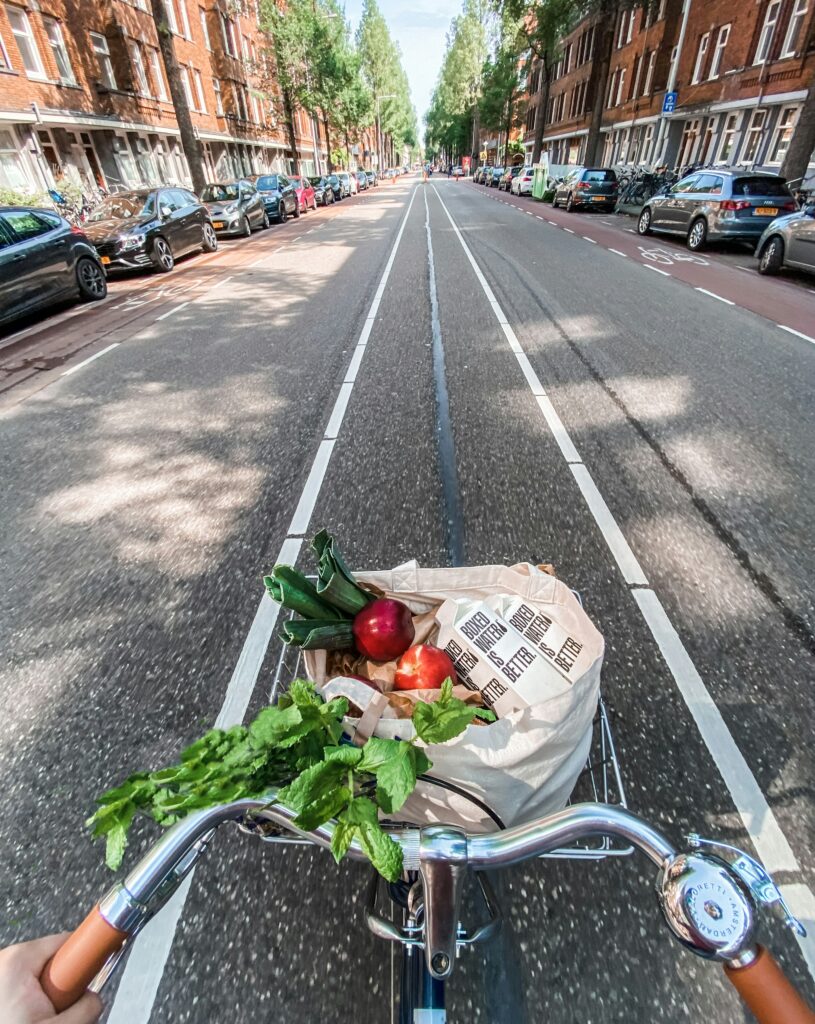As the effects of climate change become more evident and resources grow scarcer, living sustainably has shifted from being a trend to a necessity. Sustainable living means making choices that minimize our environmental impact and preserve the planet’s health for future generations. From the way we consume goods to the energy we use, every decision has the potential to either harm or heal our environment.
Adopting eco-conscious habits doesn’t require an all-or-nothing approach; even small changes can lead to a significant impact over time. In this article, we’ll explore practical, actionable steps you can take to reduce plastic waste, conserve energy, embrace sustainable fashion, and adopt eco-friendly travel habits. These lifestyle shifts can help you live in harmony with the environment, promoting a greener, healthier planet.
1. Reducing Plastic Waste: The First Step Toward Sustainability
Plastic pollution is one of the most pressing environmental issues today. Around 8 million tons of plastic end up in our oceans every year, harming marine life and ecosystems. The good news is that we can significantly reduce plastic waste by making mindful choices in our daily lives.
How to Reduce Plastic Waste:
- Use Reusable Bags: Instead of relying on single-use plastic bags, invest in reusable cloth or tote bags. Keep a few in your car or by the door, so you’ll always have them handy for shopping trips.
- Say No to Single-Use Plastics: Swap out disposable items like plastic straws, cutlery, and water bottles for reusable alternatives. Stainless steel or bamboo straws, reusable utensils, and insulated water bottles are eco-friendly replacements.
- Choose Plastic-Free Packaging: When grocery shopping, opt for products with minimal or eco-friendly packaging. Buy in bulk to reduce packaging waste and choose items packed in paper, glass, or other recyclable materials.
- Embrace DIY Products: Consider making your own household cleaners, beauty products, and even snacks to avoid the plastic packaging that comes with store-bought items. For example, homemade cleaning solutions can be stored in reusable glass bottles, cutting down on plastic waste.
- Recycle Properly: While reducing plastic use is the goal, recycling still plays an important role. Ensure you’re familiar with your local recycling guidelines and make sure that items are properly rinsed and sorted before recycling.
By reducing plastic waste, you’re helping to decrease pollution, conserve natural resources, and protect wildlife from harmful plastic materials.

2. Conserving Energy: Powering a Sustainable Home
Energy consumption is a major contributor to greenhouse gas emissions, which are driving climate change. Conserving energy in our homes is one of the most impactful ways to reduce our carbon footprint.
How to Conserve Energy at Home:
- Switch to LED Bulbs: LED light bulbs use up to 90% less energy than traditional incandescent bulbs and last much longer. This simple switch can significantly reduce your household’s energy consumption.
- Unplug Electronics: Many devices continue to use power even when they’re turned off, a phenomenon known as “phantom energy.” To combat this, unplug electronics when they’re not in use, or use power strips that can be easily switched off.
- Upgrade to Energy-Efficient Appliances: Look for appliances with an ENERGY STAR rating, which use less energy and water than standard models. While the upfront cost might be higher, the savings on utility bills and the reduced environmental impact make it a worthwhile investment.
- Use a Programmable Thermostat: A programmable thermostat allows you to set your heating and cooling systems to run only when necessary, avoiding energy waste. Lowering the temperature by just a few degrees in winter, or raising it slightly in summer, can make a big difference in energy consumption.
- Insulate Your Home: Proper insulation keeps your home warm in the winter and cool in the summer, reducing the need for excessive heating and cooling. Sealing gaps around windows and doors, and adding insulation to your attic, can make your home more energy-efficient.
By conserving energy, you reduce your reliance on fossil fuels and contribute to lowering greenhouse gas emissions, making your home greener and more sustainable.

3. Embracing Sustainable Fashion: Rethink Your Wardrobe
The fashion industry is notorious for its environmental impact, from water-intensive production processes to the staggering amount of textile waste that ends up in landfills. Sustainable fashion encourages us to think more critically about how we buy, wear, and dispose of clothing.
How to Embrace Sustainable Fashion:
- Buy Less, Choose Better: One of the core principles of sustainable fashion is to prioritize quality over quantity. Instead of constantly buying new clothes, invest in high-quality, timeless pieces that will last for years. This reduces the demand for fast fashion and minimizes textile waste.
- Shop Secondhand: Thrift stores, consignment shops, and online resale platforms offer a treasure trove of pre-loved clothing. Buying secondhand extends the life of garments, reduces demand for new production, and keeps clothes out of landfills.
- Support Ethical Brands: When purchasing new clothes, look for brands that prioritize sustainability. These companies often use eco-friendly materials like organic cotton, hemp, or recycled fibers, and adhere to fair labor practices. Look for certifications like Fair Trade or GOTS (Global Organic Textile Standard) to ensure you’re supporting ethical production.
- Upcycle or Repurpose Clothing: Before discarding old clothes, consider ways to upcycle or repurpose them. An old pair of jeans can be transformed into a tote bag, or a worn-out T-shirt can become a cleaning rag. Get creative and give new life to your old garments.
- Donate or Recycle: If you do need to part with clothing, donate gently used items to charity or clothing swap events. For clothes that are too worn to be reused, look for textile recycling programs that can repurpose fibers for other uses.
By embracing sustainable fashion, you contribute to reducing the environmental footprint of the clothing industry and promote a more ethical approach to consumerism.
4. Eco-Friendly Travel: Reducing Your Carbon Footprint on the Go
Travel is one of life’s greatest pleasures, but it also contributes significantly to carbon emissions, especially through air travel. However, adopting eco-friendly travel habits can help reduce the environmental impact of your adventures.
How to Travel Sustainably:
- Choose Eco-Friendly Transportation: Whenever possible, opt for transportation methods with a lower carbon footprint. Trains, buses, and carpooling are often more eco-friendly than flying or driving solo. If you must fly, consider offsetting your carbon emissions by purchasing carbon credits from reputable organizations.
- Pack Light: The heavier a vehicle or airplane, the more fuel it requires. By packing light, you can reduce the overall weight, which helps save energy during travel. Plus, it simplifies your trip and reduces waste from disposable travel items.
- Stay at Eco-Friendly Accommodations: Many hotels and lodges are adopting sustainable practices, such as using renewable energy, conserving water, and sourcing local, organic food. Look for accommodations with eco-certifications, such as Green Key or LEED, to ensure your stay aligns with your environmental values.
- Support Local Economies: Choose locally-owned businesses, restaurants, and tour operators during your travels. This supports the local economy and reduces the carbon emissions associated with importing goods from afar. Additionally, engaging in eco-tourism activities, like nature walks or wildlife conservation programs, helps promote environmental awareness and protection.
- Reduce Plastic Use While Traveling: Bring reusable items like water bottles, cutlery, and cloth bags to avoid relying on single-use plastics. Many destinations now have refill stations for water bottles, and reusable containers can cut down on waste from take-out food or snacks.
Sustainable travel doesn’t mean giving up on exploring the world; it’s about making conscious choices that reduce your carbon footprint and support the well-being of the places you visit.

Building a Sustainable Lifestyle, One Habit at a Time
Adopting eco-friendly practices is not about achieving perfection, but about making consistent efforts to live more sustainably. Whether it’s reducing plastic waste, conserving energy, embracing sustainable fashion, or traveling with a lighter carbon footprint, every step you take toward sustainability makes a difference.
A greener lifestyle doesn’t happen overnight, but by incorporating small changes into your daily routine, you can significantly reduce your environmental impact and inspire others to do the same. Living sustainably is about recognizing our responsibility to the planet and taking actionable steps to preserve it for future generations. By committing to eco-conscious habits, we can build a future where sustainability is the norm, not the exception.










